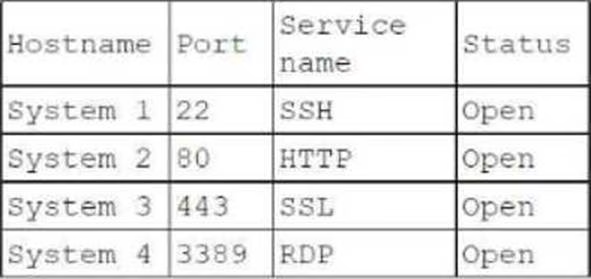During a penetration test, the tester identifies several unused services that are listening on all targeted internal laptops.
Which of the following technical controls should the tester recommend to reduce the risk of compromise?

A . Multifactor authentication
B . Patch management
C . System hardening
D . Network segmentation
Answer: C
Explanation:
When a penetration tester identifies several unused services listening on targeted internal laptops, the most appropriate recommendation to reduce the risk of compromise is system hardening.
Here’s why:
System Hardening:
Purpose: System hardening involves securing systems by reducing their surface of vulnerability. This includes disabling unnecessary services, applying security patches, and configuring systems securely.
Impact: By disabling unused services, the attack surface is minimized, reducing the risk of these services being exploited by attackers.
Comparison with Other Controls:
Multifactor Authentication (A): While useful for securing authentication, it does not address the issue of unused services running on the system.
Patch Management (B): Important for addressing known vulnerabilities but not specifically related to disabling unused services.
Network Segmentation (D): Helps in containing breaches but does not directly address the issue of unnecessary services.
System hardening is the most direct control for reducing the risk posed by unused services, making it the best recommendation.
Latest PT0-003 Dumps Valid Version with 131 Q&As
Latest And Valid Q&A | Instant Download | Once Fail, Full Refund
